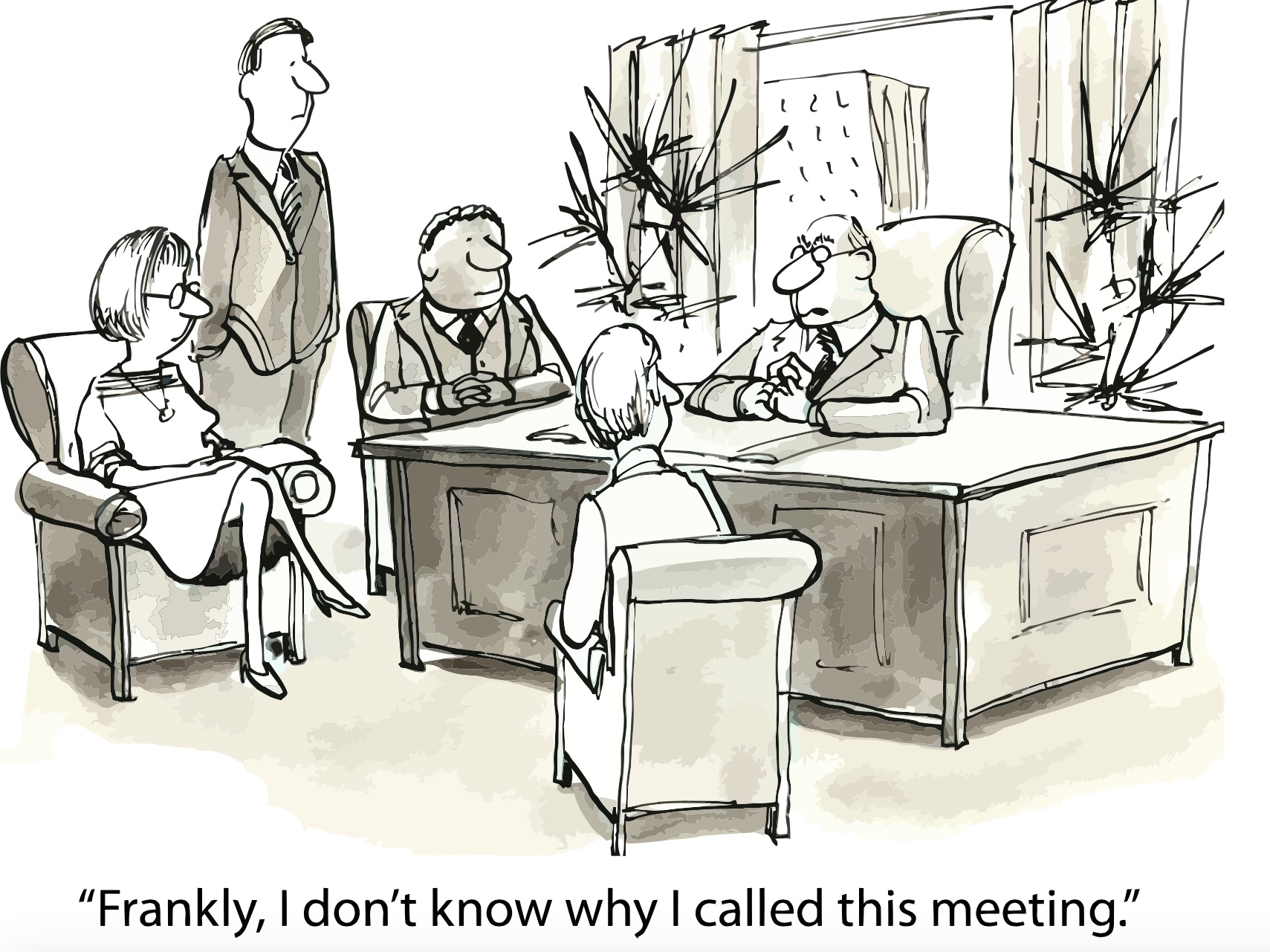
In one of my regular coaching sessions this week, we were talking about the poor meeting culture in that particular organisation. It’s certainly not unusual for meetings to be dreaded as a waste of time, and a hotbed of politics and posturing, and this was certainly the case in this particular organisation.
We were talking about what this person could do to create a culture of leadership around meetings (as a small starting point for looking at culture and leadership more generally).
Of course, there are the obvious things to do first up:
- Create an agenda that is thoughtful and will actually generate some debate, and more importantly, decisions.
- Demonstrate leadership by being on time, and calling others out who are not on time.
- Putting away mobile phones and tablets for the duration of the meeting.
- Think about standing or even walking meetings rather than meetings sat around a table.
- Think about the dynamics of where someone sits.
But the more we discussed it, the more it became apparent that the true value lay in his preparation for the meeting, well before he had even sent out the first meeting invite.
I am sure that all of us have sent out meeting invites with the hope that the relevant issue will be flushed out at the meeting, and (hopefully) resolved. Almost always, this does not happen. At best, there is some useful conversation and a commitment to do more with it — more off line meetings, more research, more more more.. Rarely are there clear, firm decisions or any actions.
That’s no real surprise.
So, we started to think. What is the actual purpose of the meeting and more importantly, what decisions need to be made from the meeting. If it is not about decision making, but rather progressing thinking on a particular issue, what is the issue — why is it an issue and what will this meeting do to further the issue?
Then, who needs to be there to either make the decision or help move the thinking along on an issue? What specific skillset/experience/thought leadership do they bring? What preparation do they need to do? What do you hope for from this specific person — in terms of both input and leadership on the issue?
What preparation do you, as the convener of the meeting need to do on the issue?
- Instead of just sending a meeting invite to all and sundry — hand pick the list of who really needs to be there.
- Then call them and tell them why you are inviting them, what you need from them in terms of meeting input and what you hope the meeting will achieve. Tell them what preparation they will need to do in order to maximise the value of the meeting.
- Keep track of the attendees — if a key person isn’t able to make it, what does that do to the conversation? Does it change the dynamic of the meeting — should it be deferred or someone else attend on their behalf?
- Make sure that YOU are prepared — i.e. — do what you say you will do.
Of course all of this takes time. But when you think of how many hours you attend meetings that you don’t need to — or that are a complete waste of everyone’s time — you can see how perhaps approaching it differently might yield results. And how some work up front my just create tangible outcomes and results. If nothing else, paying attention to all this might illustrate how much time you spend at unnecessary meetings or unproductive meetings. And that might be impetus to think about change in whatever manner that works for your organisation.
Someone who has really nailed the approach to really effective meetings is Nancy Kline. Her approach can be extraordinarily effective and another way to consider how to get on top of what is generally just a massive, soul destroying, time waster.
What do you think? Any really clever ideas to share?
Until next week, happy reading.

